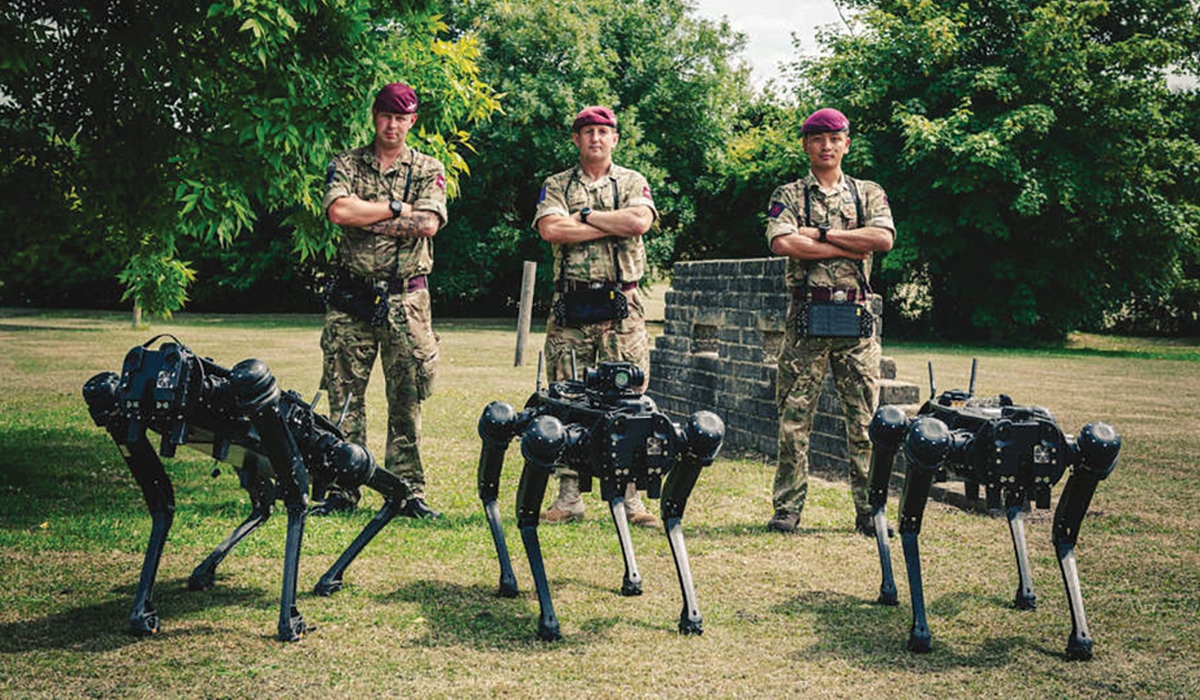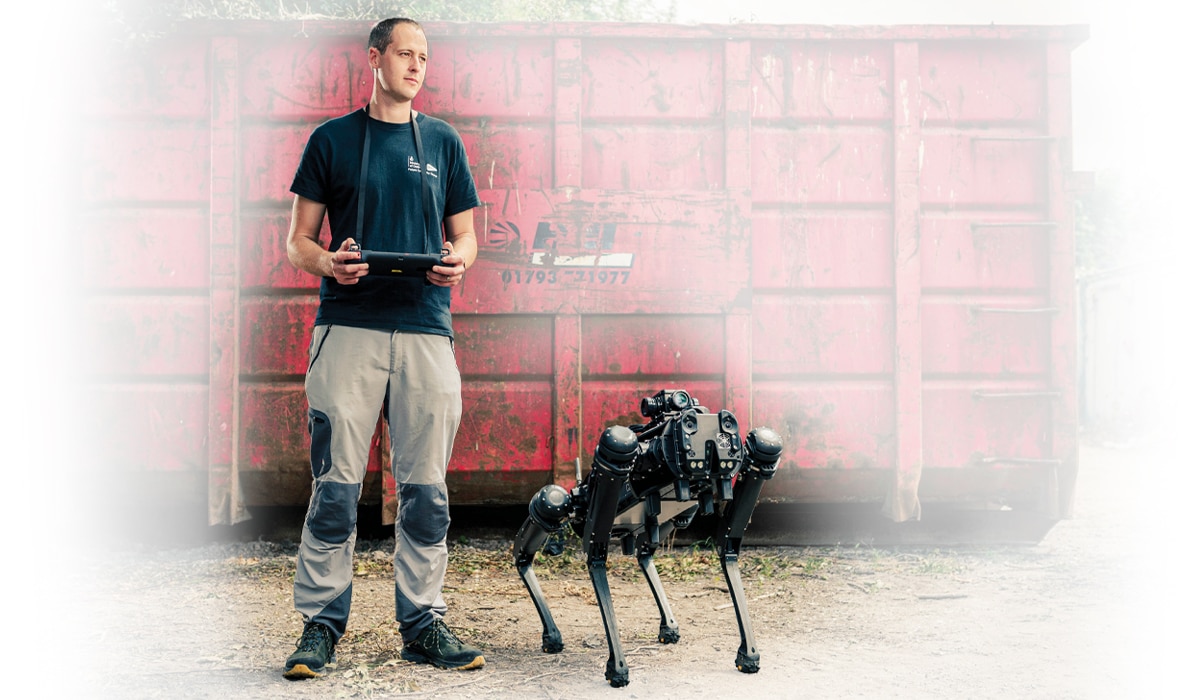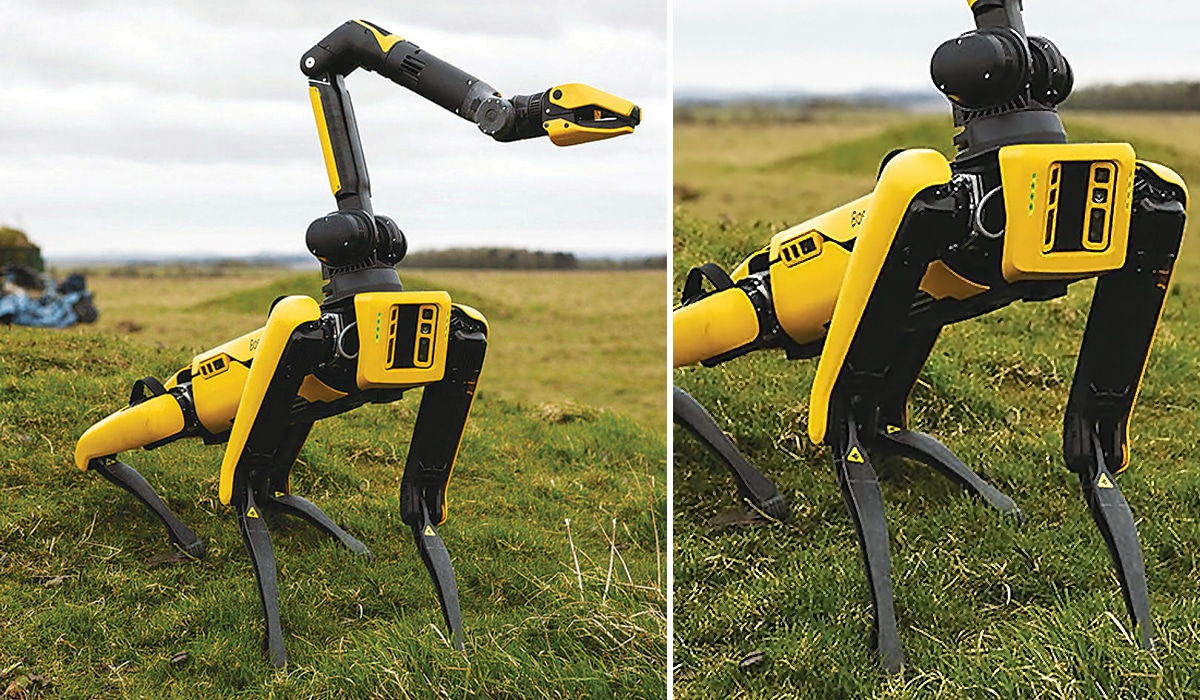Man’s best friend received a technological upgrade and was enlisted in military. We have the scoop.
Created by Ghost Robotics, the Vision 60 is one of the latest robotic developments to find its way into the ranks. In its most basic form, the V60 comprises two pairs of legs to carry myriad payloads onto the battlefield. These payloads can include thermal or infrared surveillance cameras, and a robotic arm for bomb disposal and handling of harmful substances. They can even be deployed by parachute.
Dogs Of War
The four-legged soldier can also be equipped with weapons and weaponised attachments. At Ghost Robotics’ annual meeting in 2021, the V60 could be seen sporting a 6.5mm sniper rifle. There’s also scope for larger payloads, such as anti-tank weaponry and disrupters, to be installed on the robot’s back. As a quadruped, the Ghost V60 can do something other terrestrial robots struggle with: navigation. Currently, autonomous robotics in the military rely on either wings or wheels to move around. However, the Ghost V60 has traded in a set of caterpillar tracks for four feet that allow it to navigate difficult terrain and urban areas.

Four Leg Drive
“Imagine a scenario, let’s say, in disaster relief, where the army is providing military aid to UK civil authorities or over-seas,” said Major David Price of Future Force Development, part of the British Army. “If you’re trying to navigate complex terrain like rubble, [the V60’s] legs could enable it to manoeuvre in places that a wheeled or tracked robot may not.”
The V60 can traverse difficult or unusual terrain using a light detection and ranging (lidar) imaging system. Using lidar, the V60 can map out its surrounding area to create a 3D map of its environment and highlight any possible dangers.
Canine Control
Although it can detect potential hazards, the Ghost V60 cannot respond without human assistance. Unlike other military robots and drones, the V60 is not an autonomous robot, but is remotely controlled by a human operator. The purpose of these high-tech pooches is ultimately to minimise risk to humans. “If you have fewer soldiers in harmful situations, we will reduce the overall risk we expose our soldiers to,” said Maj. Price. The Ghost V60 has joined the British Army’s 16 Air Assault Brigade Combat Team for training and development, with the hope of it being fully fielded by 2023.

Inside The V60
Get to know the newest member of the British Armed Forces
1. Communications: Having both 5G and WiFi gives the V60 a contingency that allows the robot to remain connected to its controller in case one connection drops out.
2. Energy: V60s can continuously walk at 3.2 km per hour for 3.15 hours on their batteries.
3. Eyes: Cameras at the front, rear and side of the robot give it a 360-degree view.
4. Legs: Each of the legs has three degrees of freedom, driven by 12 motors.
5. Speed: The V60 typically walks at around 3.2 km/h, but can sprint at up to 10.8 km/h.
6. Feet: At the ends of each leg are interchangeable treads that can be configured for different environments, such as sand and ice.
7. Controller: The V60 is controlled fully by a human operator using something that’s similar to a home gaming-console controller.
Spot the dog
The V60 isn’t the only robotic dog that has joined military ranks. Spot is a little yellow robot dog that’s been introduced into the armed forces in many nations, including the US and France. Both the V60 and Spot share dog-like quadruped locomotion and have a modular payload for a variety of cameras and sensors. This robotic companion, unlike the V60, does have autonomous capabilities.
Using pre-planned routes, Spot can use its on-board sensors, such as lidar, to navigate obstacles and tackle tough terrain. Within the military, Spot will only ever play a supportive role. Boston Dynamics, Spot’s creators, prohibit the use of weaponry as a payload on the robot. Spot has recently been deployed to Ukraine by the United States Army to tackle undetonated mines and help remove mortar shells using its semi-autonomous robotic arm.

Boston Dynamics’ Spot extending its flexible robotic arm







